

- Contact Us
- Search
-
Mayflower400 partner destinations:
Virtual Voyages: The City of London
In this edition of Virtual Voyages we explore the historic City of London and its links to the Mayflower story.
Discover the stories behind how the Mayflower’s journey across the Atlantic was funded, the commercial reasons for why the ship sailed and the people involved in financing its crossing in the heart of what we now know as the Square Mile.
We’ll also go inside historic buildings such as the Stationer’s Hall, where a young Edward Winslow worked his apprenticeship before becoming an influential member of the new colony in America.
Watch us turn the page of the original records of Winslow’s book, written in America in the 17th century. We’ll also explore the churches linked to the Mayflower passengers including the unique Dutch Church and the stunning St Brides Church on Fleet Street - forever intertwined with the Winslow family - before crossing the Thames to find the docks of the Mayflower itself and the burial place of its captain Christoper Jones.
Produced in conjunction with and narrated by Pam O'Toole, of Love London Tours.
You can find out more about tours with Pam and Love London Tours on their website here.
The City of London and its role in the Mayflower story

The City of London has been the financial powerhouse of England since the Roman times – and was the starting point for the Mayflower’s historic voyage some 400 years ago.
The Mayflower story is famous for its passengers, the high-minded Puritans and Pilgrims fleeing persecution.
However, without the support of rich London merchants, the colonists might never have reached America.
Those merchants procured the ship herself, its crew and recruited non-religious folk – known as ‘strangers’ – to join the expedition.
Crucially, they also obtained the political and financial backing to make the voyage possible.
And their motive was purely profit…
The Royal Exchange
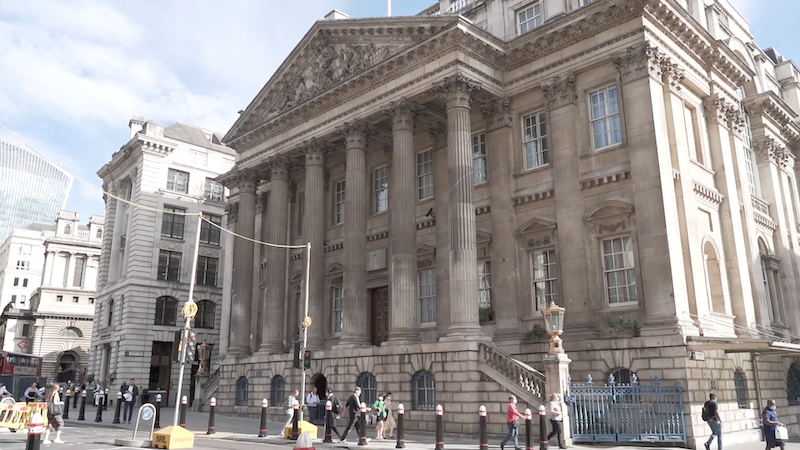
At the time of the Mayflower, The Royal Exchange was the economic hub for London’s merchants – the place they met to do business.
From the late 1500s, those traders had watched as Spain amassed fantastic wealth from its American colonies.
They, too, wanted to make money from the Americans – and for that they needed English colonists.
Cornhill
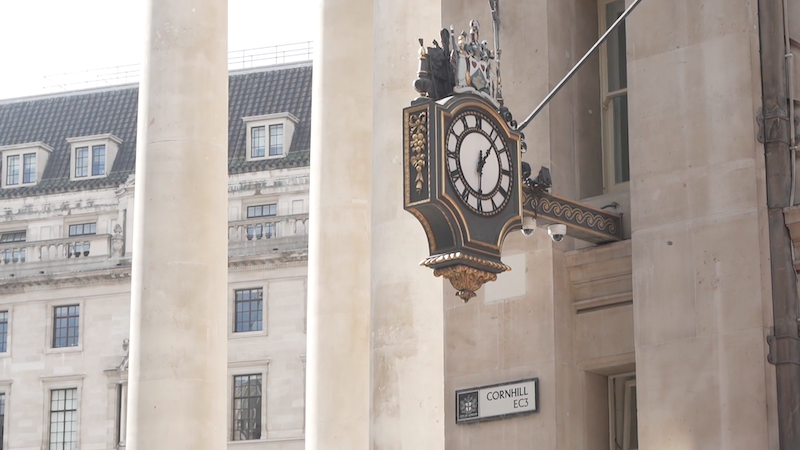
Down the side of the Exchange, in a road called Cornhill, lived two people who would play a key role in making Plymouth Colony a success.
The first was Tisquantum (also known as Squanto), the Wampanoag native who helped the passengers and crew survive their first harsh winter in America.
In the early 17th century, Squanto had been abducted from Massachusetts by English slavers and somehow escaped to London.
He is said to have lodged on Cornhill with John Slaney, a merchant dealing with the North American colonies.
Squanto is also likely to have learned much of his English here, before his work for London merchants took him back to Massachusetts.
'The Pilgrim Publisher'

In the 1620s, Cornhill also housed a book shop owned by Puritan Separatist publisher John Bellamy – sometimes called ‘the Pilgrim publisher’.
In later years he would provide religious books for Mayflower elder William Brewster.
More importantly, Bellamy published some of the earliest publications by the Pilgrims’ Plymouth Colony – including Mourt’s Relation, which was written by William Bradford and Edward Winslow and contained a description of the first Thanksgiving.
He also published Winslow’s ‘Good news from New England’, in which Winslow urged readers interested in the new colonies to seek out books at Bellamy’s shop in Cornhill.
Stationers’ Hall
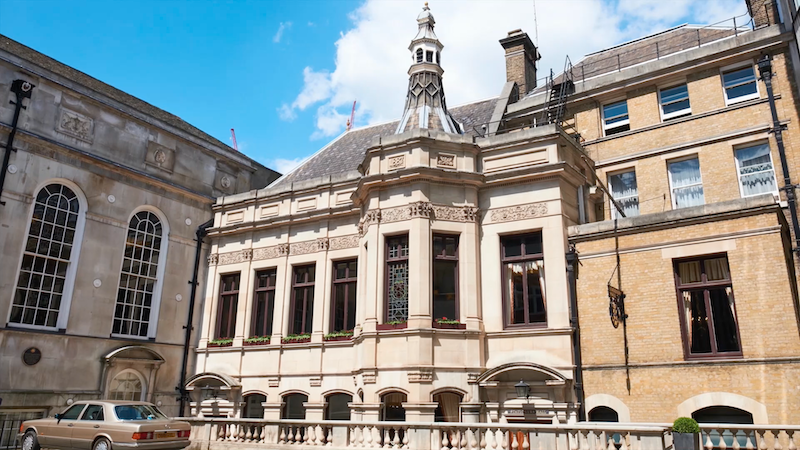
Founded in 1403, the Stationers was a livery company, or trade guild, bringing together book sellers, publishers, illustrators and, later, printers.
Originally, they sold their goods from stationery stalls, and the material they sold (books, pens and paper) became known as stationery.
In the 16th and 17th centuries, the Stationers were immensely powerful. The Monarchy had given them a monopoly over printing and publishing in exchange for acting as a kind of unofficial state censor – hunting out heretical texts.
Every book in England had to be registered at Stationers’ Hall, in an early form of copyright, while controversial books were burned here.
Edward Winslow was apprenticed at Stationers’ Hall, but he never finished his apprenticeship.
In the archives here, housed in the oldest 17th-century warehouse still standing in London, you can see the record of Winslow’s freedom.
Even Winslow’s new-found prominence and his freedom from the Stationers didn’t stop him being imprisoned in the Fleet Prison over his colony’s Separatist practices.
Winslow was accused of illegally preaching in church and illegally marrying couples. However, he wasn’t the first to be imprisoned…
The Old Bailey
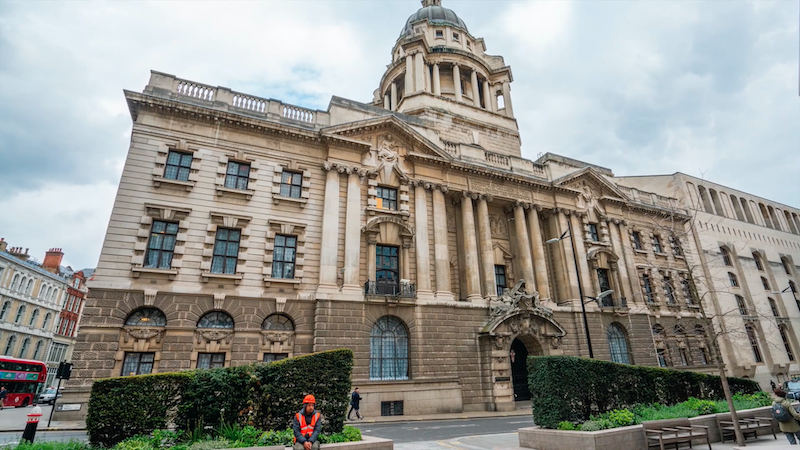
Just 100 yards from Stationers’ Hall is The Old Bailey, also known as the central criminal court, which stands on the site of the infamous Newgate Prison.
Here, many Brownists (the form of Separatist Puritanism followed by the Pilgrims) were incarcerated and died in appalling conditions.
The sentencing at Newgate of two Brownist leaders, John Greenwood and Henry Barrow, and their execution in the late 1500s decimated the movement.
In 1603, a new monarch came to the throne, King James I, and he intensified the persecution or Puritans, warning that he would harry them out of the land.
He succeeded and many, including the Pilgrims, fled to Holland. But the King’s interests and those of the Mayflower Puritans were soon to converge…
The Guildhall
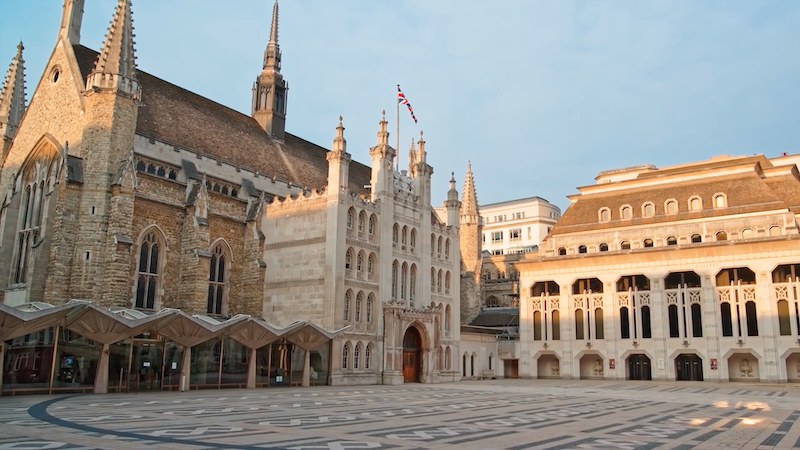
King James I, like the London merchants, was anxious to accrue wealth from the Americas, and also the international power and prestige associated with owning foreign colonies.
From 1606, he issued a series of charters permitting the colonisation of what was then known as Virginia – but he had no intention of funding it himself.
Instead he sought the funding from the 15th-century Guildhall, then the pollical hub of the City of London and dominated by rich city merchants.
They formed a joint stock company, the Virginia Company, to spread the risk and share the profit.
The Dutch Church, Austin Friars
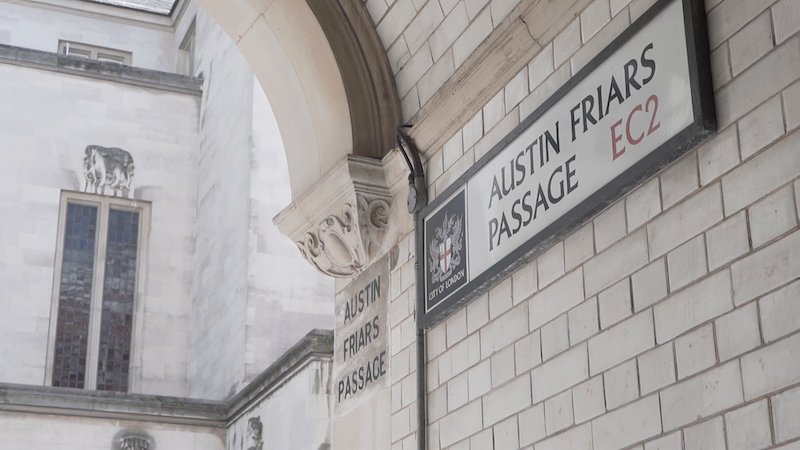
By 1617, the Pilgrims were disenchanted by life enlightenment and decided they wanted to leave for America, but they needed the Virginia Company’s help – not so easy given their dissident Puritan background.
As well as seeking land for the King, they wanted to be allowed to cover themselves under English law and to be free to follow their consciences.
They also needed to find money to fund their voyage, so they sent Leiden Deacon, John Carver and Robert Cushman to London to negotiate – a process that would take three years.
Austin Friars – known as ‘The Dutch Church’ because its congregation were Dutch protestant refugees – became a sanctuary for Carver, Cushman and possibly also William Bradford.
It was also geographically close to where the Pilgrims were negotiating with a merchant called Thomas Weston for funding to finance the voyage.
But most importantly, services at The Dutch Church would have been similar to those in Leiden, and they could worship here without fear or prosecution.
Cheapside
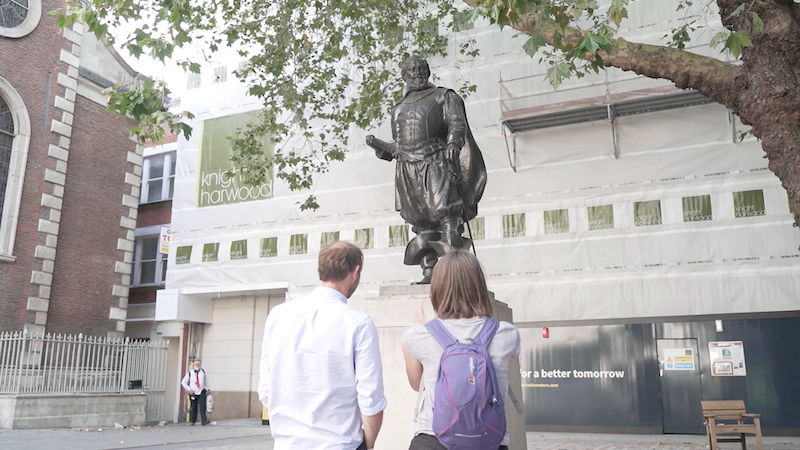
Merchant Thomas Weston, a rather unscrupulous character, was brought in to provide funding for the trip – something that was written about by Captain John Smith.
Smith was a buccaneer, an explorer, an author and one of the leaders of Jamestown, the first permanent English settlement in America.
He was clearly interested in the Mayflower expedition, writing that 70 gentlemen merchants and tradesmen came together to fund it.
Smith’s statue stands today in Cheapside, outside the ancient church of Saint Mary-le-Beau. He was a parishioner at St Mary’s and once gave a settlement here promoting settlement in America.
He also mapped the New England coast, and his map – which named Plymouth in Massachusetts – may have been used by the Mayflower’s captain, Christopher Jones.
Smith is famous for his story alleging that his life was saved by Native American princess, Pocahontas.
Several investors in the Mayflower, or merchant adventurers as they were known, were based in the Cheapside area. They included Richard Andrews and John Pocock, who are mentioned many times in William Bradford’s history.
Pocock also helped to fund a later wave of English migration which founded Boston.
Drapers’ Hall
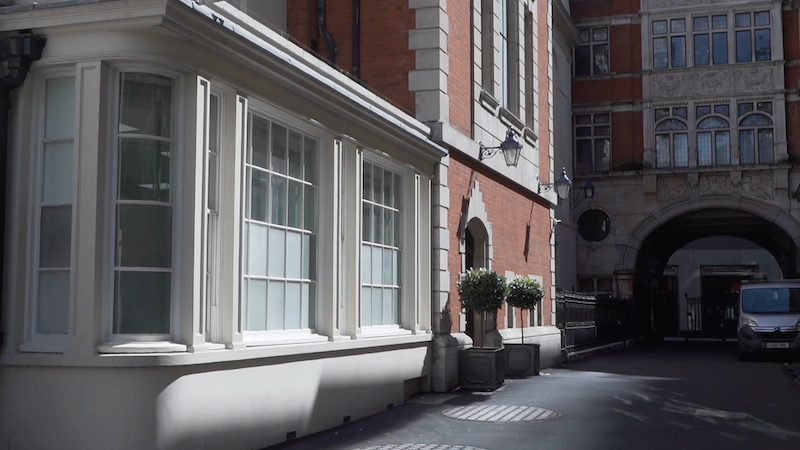
The Drapers company was one of the richest and most powerful livery companies of them all and held a substantial amount of stock in the Virginia Company.
Author, Leon C Hills says Mayflower ‘stranger’ John Howland made the voyage to America – as said his brothers. Arthur and Henry, later on – because another Howland brother, Humphrey, was apprenticed to the Drapers.
John Howland made the Mayflower journey as the indentured servant of John Carver and was swept overboard in a storm, but he managed to grab hold of a rope and was dragged back more dead than alive.
However, in Plymouth he became a prominent citizen and went on to have 10 children with Elizabeth Tilley.
St Mary’s Church
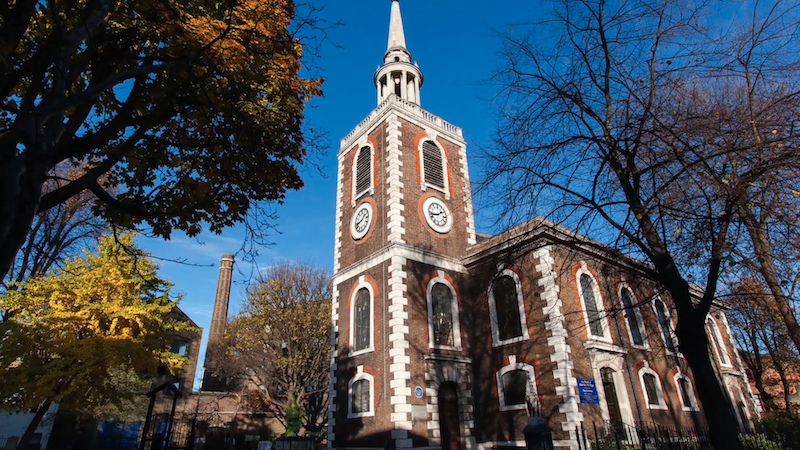
Rotherhithe, on the other side of the River Thames, was the Mayflower’s jumping-off point. A plaque on St Mary’s Church commemorates the sailing.
The Mayflower was captained by Christopher Jones, remembered here with a statue in the graveyard of the same church.
Captain Jones survived the first bitter New England winter in which several of his crew perished, before heading back to England with the Mayflower the following spring.
But he died less than a year after the ship’s return from America. Some say he was worn out by the journey and the privations he endured.
Jones and two other part-owners of the Mayflower are said to be buried somewhere in this churchyard.
The Mayflower pub
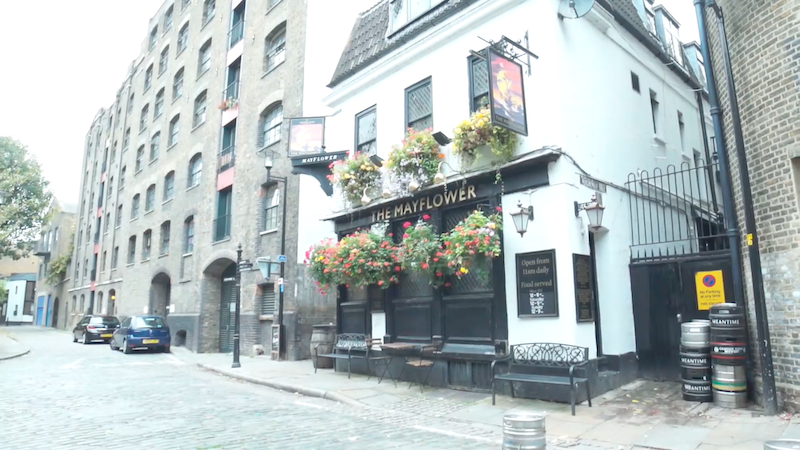
By all accounts, Captain Jones kept the ship berthed behind a public house to save him from paying mooring fees down river.
The pub is now called ‘The Mayflower’ but in the 1620s it was known as ‘The Ship’.
A number of accounts suggest that around 65 to 70 people, crew and ‘strangers’ sailed on the Mayflower from Rotherhithe.
If that is the case, they may well have embarked from these very landing steps next to the pub.
However, some historians suggest that they might have actually set sail from another part of London…
St Bride’s Church, Fleet Street
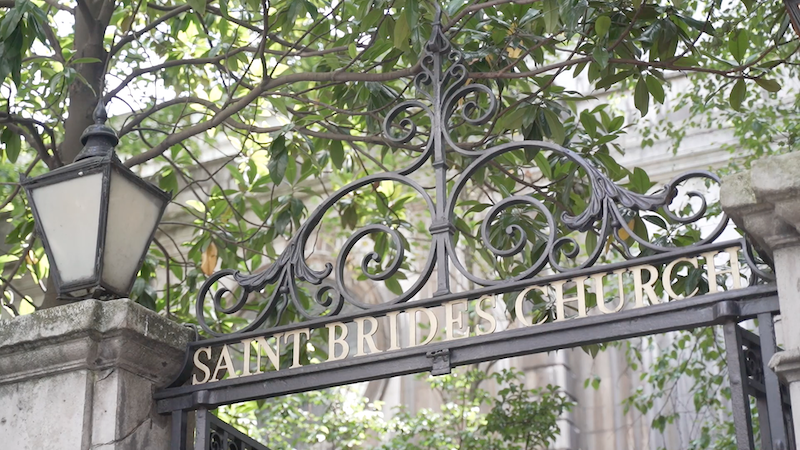
One of the few places to extensively commemorate the settlement of America is St Bride’s Church, not far from Stationers’ Hall.
It has historical links not only with the Pilgrims, but also with the first-ever English settlement in America at Roanoke, now known as North Carolina.
The church also has links with a group of youngsters forced into servitude in Virginia, and still has strong links with the US today, including with American journalists who paid the ultimate price for their stories. They are remembered here at the Journalists’ Altar.
St Bride’s story perhaps best illustrates just how many historical and contemporary links exist between the ancient City of London and America.
Sign up for the latest Mayflower 400 news
You'll be the first to hear the latest Mayflower news, events, and more.
Log In
Register
Mayflower 400 Proudly Supported by our National Sponsors and Funding Partners






